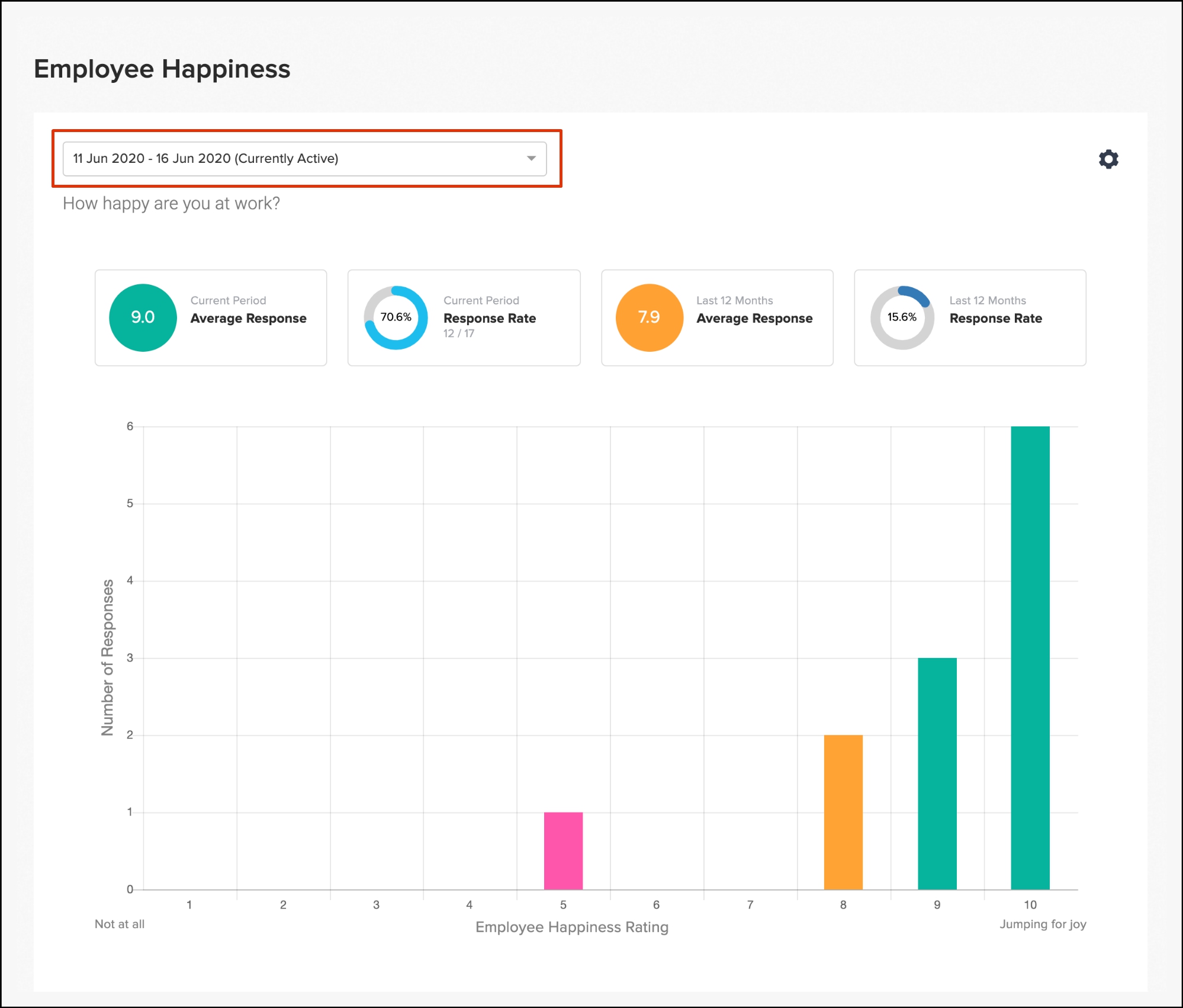The Ultimate Employee Engagement Guide
Published
The Ultimate Employee Engagement Guide
Having actively engaged employees isn’t just another feather in your organisational cap – it’s the key to unlocking a powerhouse of performance. Stellar productivity, a solid employee retention record, and a workplace that has a positive culture are just a few of the many benefits of a happy team. Think of employee engagement as less of a tick-box exercise, and more like creating a vibrant and enjoyable workplace where your team will want to grow with you.
When your organisation works on keeping its workforce actively engaged, you’ll find that the enthusiasm and connection your staff holds for your business is unmatched. It’s something that can’t be taught in a training session, and is the determining factor of motivation, effort and commitment; three elements all business owners and managers want to see in their staff.
This outcome really depends on the discretionary effort of a company’s leadership. So read on as we take a deep dive into how you can improve employee engagement.
What is in this employee engagement guide?
Employee engagement is a direct driver of positive business outcomes like higher levels of morale, improved efficiency and even the potential for a lower number of sick days. On the flip-side, employee churn comes with high business costs. Think loss of production and reduced output, recruitment and training costs, and so on.
Luckily, this guide will walk you through how to foster an engaged workforce, increase productivity, drive profitability, and most importantly, create an action plan.
What you’ll learn:
- How strong leadership can improve your employee engagement levels
- How employee engagement is connected with revenue growth
- How employee engagement can help your business, and a whole lot more
Download now.
What is employee engagement?
Employee engagement can be seen as a measure of motivation and refers to the emotional commitment that employees have towards their work, the organisation, and the company’s mission.
Highly engaged employees are not just physically present at their jobs; they are invested in their roles, enthusiastic about contributing to the company’s success and motivated to go above and beyond what is required. Supporting your employees and having an engaged team means you’ll be creating a culture where employees genuinely care about doing a great job and contribute to a better workplace overall.
Stumped at where to start with employee engagement? Start with building an EVP.
Types of employee engagement
Engaging your workforce isn’t a one-size-fits-all solution. It’s about finding the groove that resonates with your unique team, your company values and goals. There’s a smorgasbord of ways to connect and inspire with your team, so it’s up to you whether you choose to mix it up or zero in on a killer strategy that sets your organisation apart.
The main areas of employee engagement include:
- Clearly defining your organisation’s values
- Defining a shared purpose for the company’s future
- Ensuring a positive and safe work environment
- Motivating employees with rewards
- Caring for health and wellbeing (physical and mental)
- Defining individual employee roles
- Nurturing employee relationships
- Maintaining clear communication channels
- Creating and fostering business leaders
- Fostering personal and career development
- Psychological safety – allowing the employees to be themselves in the work environment
Who should be involved?
A successful employee engagement action plan requires a multi-faceted approach with involvement from leadership, HR, managers, employees, and various support teams across the organisation. It’s a collaborative company-wide effort that should be integrated into an organisation’s overall strategy.
Getting your leadership team involved in employee engagement is crucial for many reasons. Their commitment to employee engagement sends a powerful message throughout the company, and a genuine and dedicated approach from higher levels of management will create a company culture primed for positive engagement between employees.
Here are a couple of reasons why your leadership team should get involved:
- Upper management’s active involvement in employee engagement aligns organisational goals with employee efforts, signalling that it’s a top priority.
- Leadership’s strategic resource allocation ensures ample budget and support for engagement initiatives, be it training, wellness, or team-building activities.
- The leadership team significantly shapes organisational culture; their participation in engagement efforts can help boost employee engagement and satisfaction.
- Leadership’s engagement ensures clear communication on the importance of happy employees and wellbeing, fostering trust and strengthening the employer-employee relationship.
- Highly engaged employees, backed by leadership, contribute creatively and drive innovation, providing valuable input in strategic decision-making for organisational success.
Enthusiasm from upper management can be a catalyst for creating a positive, productive, and inclusive work environment, with long-term benefits. When all employees are engaged, their sense of shared goals and purpose can be a driver to succeed.
Why is employee engagement important?
Engaged employees are energised and passionate about their work and find it much easier to achieve and maintain positive mental health. These high-performing employees are more willing to go the extra mile and raise the bar of the service offered by your company.

Key benefits of employee engagement initiatives
We’re all well aware that great customer satisfaction results in increased customer loyalty, right? Well, the same applies to your employees. 44% of UK workers listed a positive employee experience as a top priority in the quest for better engagement. Employee happiness is more important than ever, with experts stating that the war for talent will be won with culture over salary.
If you take the time to implement successful employee engagement strategies in the workplace, you’ll reap the rewards, including:
- Increased employee performance and higher productivity
- Improved relationships between team members and clients
- Greater profitability
- Higher employee retention
- Dynamic teamwork
The more time you are willing to spend designing, implementing and managing your employee engagement efforts, the greater the outcome.
How to increase employee engagement
Studies have found that the following areas are key drivers of employee engagement:
- Purpose and meaningful work
- A positive and supportive environment
- Development and growth opportunities
While the above areas are often highlighted, it’s important to note that employee engagement is a multifaceted approach and different organisations and industries may have unique drivers that are particularly relevant to their context.
Regular feedback, pulse surveys and communication, and a flexible approach to addressing the evolving needs of employees are key elements in sustaining high levels of engagement.
Attractive pay and work benefits are now a standard expectation from employees, alongside professional development opportunities and the chance of a promotion. Remaining challenged and seeing the potential for growth in our careers is a common and strong driver in avoiding disengaged employees.
The manager’s role in employee engagement strategies
There’s no silver bullet when it comes to employee engagement, and it varies widely based on your workplace dynamics, size, and demographics. However, it’s worth considering how simple factors like leadership style and work relationships can keep employees engaged.
When employees feel respected, aligned with the company’s vision, and see growth opportunities, they become more committed to personal and organisational development and engagement is largely dependent on team leaders following through with their promises.
For example, if employee feedback is asked for and received, it should receive actioned, tangible change. To ensure this is done, you need a 360-degree feedback process to not only understand the pain points in your entire organisation but to show how you plan to develop a way to action changes.
Employees will judge managers on what they do in response to their feedback. Asking for feedback but ignoring it is more damaging than not asking in the first instance. Sometimes you won’t even need to ask.
Employee turnover figures are a litmus test for employee engagement, and a churn rate greater than 10% means your internal practices need some work. An employee survey can be the best way to find out where you’re going wrong and how best to improve.
Employee engagement strategy examples
Elevating employee engagement goes beyond traditional incentives and monetary benefits. It’s about prioritising your team’s value and happiness. Our advice is to take a proactive approach in shaping the employee experience, starting from the initial job application.
What to consider
Consider the virtual or physical workspace and cultivate a company culture that resonates with your workforce.
When it comes to retaining employees, it’s worth considering the impact of tech such as performance management or employee engagement tools. Do you currently run any recognition programs to boost engagement and inspire increased productivity?
Are your tech tools empowering your employees for success? Do your policies align with the needs of today’s workers?
Remember, enhancing the employee experience is the direct route to achieving superior engagement. Make every step of the journey count.
To build and increase employee engagement in your workplace, you’ll need to do more than just offer remuneration and perks.
1. Prioritise results over working hours
Be wary of the added stress that micro-managing and constant monitoring and measuring of input or hours worked can have on busy employees who genuinely want to engage. An outcome-focused workplace culture puts more emphasis on results, empowering employees with their responsibilities while allowing them to have a better work life balance.
With a flexible approach, employees will have more job satisfaction and be more open to engaging. Supporting employees who have families and other commitments with the option of remote and hybrid working models where possible means teams can have more productive working hours while also enjoying a more flexible schedule.

2. Engage employees with rewards and recognition
One of the best ways to drive employee engagement is through reward and recognition. For every piece of criticism an employee receives, six pieces of positive reinforcement should counteract it. If your employees do not feel recognised or appreciated, they will be less emotionally invested in their role and therefore less engaged, less productive and disloyal.
Implementing a reward and recognition plan goes beyond the occasional gift card. It must be part of your company’s culture. To do this, you need a leadership framework for reward and recognition that encourages employees to be part of it.
Both senior executives and employees should be armed with the tools to reward and recognise each other, as this will actively encourage positive behaviours.
At Employment Hero our version of a gift card is Hero Points, an easy way to offer gifts or bonuses for employment anniversaries, new clients or the Christmas bonus. Hero Points make it easy to reward or recognise with discounts on something staff will actually want or need.
3. Use personalised communication styles
Understanding the unique ways in which your team likes to communicate can go a long way in terms of keeping conversations open, approachable and more engaging.
This approach can be difficult for larger companies, which is why every level of management needs to be engaged. Start by sitting down with each employee and spending time learning how they like to be communicated with. Use this unique approach when running your weekly one-to-ones, delivering feedback, and goal setting.
4. Provide regular employee feedback
The optimal opportunity to work on communication styles is by conducting regular one-on-ones. Regular feedback is essential to measuring employee engagement and employee satisfaction levels. It also helps your team to reach their full potential and move up in your company structure.
Whether you’re in senior management, a new manager or early on in your career, the need for constant communication is an important part of a well-functioning team. Get to know your team, their goals and their challenges and they will feel respected and committed to working together.
Measuring engagement with employee engagement surveys

A great way to measure the success of your employee engagement is via employee engagement surveys.
Employee surveys give your team a chance to be honest about the culture in your workplace, identify critical areas of improvement that you may not know about, and see which areas of improvement mean the most to your team. Think of it like a temperature check on your organisational culture.
The specific employee engagement survey questions you ask are crucial, as you’ll want to ensure they will give you the information you need while also being actionable. Remember, you will only get a team of highly engaged employees if you act on employee feedback.
Employee satisfaction and happiness go hand-in-hand with employee engagement. So it’s important to incorporate wellbeing surveys as part of your employee engagement strategy.
Using employee engagement software
All of this can be made easier with Employment Hero’s engagement software. Our employee engagement software offers measurable ways to track the levels of employee engagement in your company, all through one online experience.
Some of the advantages of using our employee engagement platform:
- An employee self-service portal where employees can request leave, view payslips and update their details easily, building trust and heightening employee engagement.
- The Swag mobile app through which employees can manage leave and timesheets or find contact details on the go.
- The Company Feed, a reward and recognition tool where members of your organisation can publicly thank each other and show appreciation, helping employees feel engaged with the entire organisation.
- Custom surveys which you can create and send to employees to collate, track and analyse feedback, comparing it with your business outcomes.
- Happiness scores which provide insights via an anonymous, monthly score that gauges the vibe of your business
- Peer to Peer Feedback through which staff can recognise the efforts of one another to establish greater camaraderie and performance
Learn more about how we can help with employee engagement strategies by booking a demo with one of our business specialists today.
Engaged employees – the key competitive differentiator
Just remember that achieving great engagement levels cannot be done in a single step. It requires a mix of communication styles and channels, collaboration, and learning.
Make use of the tools available to you to help your team communicate openly and collaborate seamlessly, and work towards a positive change in your company culture.
Download our guide now to learn more about creating a team of highly engaged employees.
Related Resources
-
 Read more: Employment Hero UK June Jobs Report: Full-Time Pay Surges as Boomers and the North Lead Gains
Read more: Employment Hero UK June Jobs Report: Full-Time Pay Surges as Boomers and the North Lead GainsEmployment Hero UK June Jobs Report: Full-Time Pay Surges as Boomers and the North Lead Gains
Published Employment Hero’s June 2025 Jobs Report paints a more optimistic picture for the UK’s small and medium-sized enterprises (SMEs),…
-
 Read more: The North and Midlands Lead UK in Wage Growth as Regional Pay Rises Outpace London
Read more: The North and Midlands Lead UK in Wage Growth as Regional Pay Rises Outpace LondonThe North and Midlands Lead UK in Wage Growth as Regional Pay Rises Outpace London
Published The North and Midlands Lead UK in Wage Growth as Regional Pay Rises Outpace London. The UK’s SME labour…
-
 Read more: Older Workers Reap Biggest Pay Gains as Boomers Lead June Salary Surge
Read more: Older Workers Reap Biggest Pay Gains as Boomers Lead June Salary SurgeOlder Workers Reap Biggest Pay Gains as Boomers Lead June Salary Surge
Published Employment Hero’s June Jobs Report reveals that Baby Boomers and Gen X workers are leading wage growth in the…










